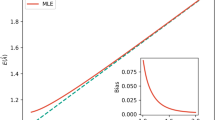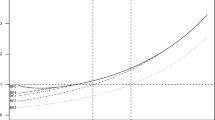Abstract
ON p. 7 of NATURE of March 3 a recommendation is mentioned that when taking out the number corresponding to a logarithm a table of antilogs should be used. Assuming the usual seven-figure work, the opposite course should be followed, because the computer can then write down five figures at once and add the remaining two by means of the difference table; no addition or crossing out is required. Thus for the logarithm 0.1234567 the log table gives 1.3287 for 1234269, and 298 in the 327 difference table gives 91, so we write 1328791. Vice versa, having 1.328791, what is the logarithm? The anti-table gives 12345 at once, whilst the difference 20 gives 67, so that we write 1234567. No figure requires alteration and the work is done with a minimum of mental strain.
This is a preview of subscription content, access via your institution
Access options
Subscribe to this journal
Receive 51 print issues and online access
$199.00 per year
only $3.90 per issue
Buy this article
- Purchase on Springer Link
- Instant access to full article PDF
Prices may be subject to local taxes which are calculated during checkout
Similar content being viewed by others
Author information
Authors and Affiliations
Rights and permissions
About this article
Cite this article
A. I., R. Logs and Antilogs. Nature 107, 300–301 (1921). https://doi.org/10.1038/107300c0
Issue Date:
DOI: https://doi.org/10.1038/107300c0
Comments
By submitting a comment you agree to abide by our Terms and Community Guidelines. If you find something abusive or that does not comply with our terms or guidelines please flag it as inappropriate.



